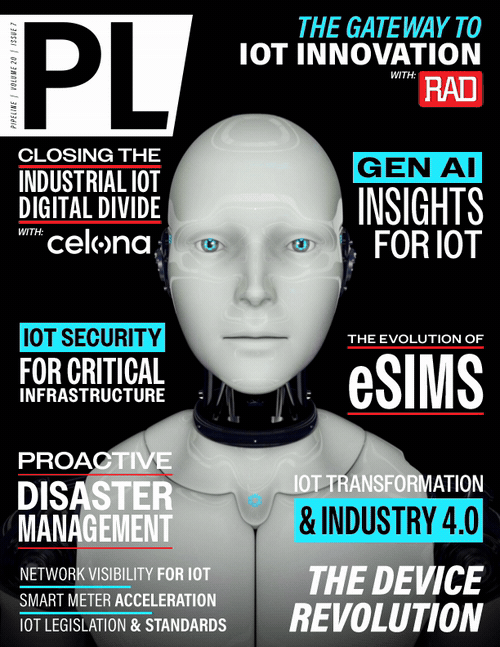From Hardware to Holistic: The IoT
Revolution in Business
By: Ron Konezny

As organizations around the world embrace digitalization and Industry 4.0, the demand for Internet of Things (IoT) technology is skyrocketing. In fact, the global IoT market is expected to be worth $2.23 trillion by 2028, with a compound annual growth rate (CAGR) of 12.57 percent. The pressure to adapt and transform is undeniable in this rapidly evolving landscape.
Business transformation can be daunting, particularly for large, established technology companies in the IoT space. Rarely a simple task, business transformation often involves a fundamental shift in strategy, operations, and company culture. However, when the principal driver for transformation is the customers’ IoT needs, the journey, despite its challenges, becomes not only necessary but also extremely rewarding. Moreover, when the impetus for this transformation is the customer, the entire organization can more easily align itself around a common goal – in this case, modern IoT enablement.
The evolving IoT-related customer demands and needs that arise from the IoT revolution also require businesses to take a more comprehensive approach. For example, rather than forcing customers to tackle IoT in a piecemeal fashion – buying hardware from one vendor while using others to address connectivity, security, and IoT management – organizations in the IoT space can solve their customers’ current challenges more effectively by undergoing business transformation and delivering complete integrated solutions, all from one vendor.
Businesses Drivers for Digital Transformation
The catalyst for business transformation for many companies typically involves the pursuit of revenue gains or product offering diversification to hedge against market volatility. Baked into these business drivers is the recognition that customer needs and challenges evolve amid technological change. An example of this customer-driven transformation is seen in brands like Netflix, which originally mailed DVDs to customers’ homes before eventually switching to online streaming in order to accommodate the growing demand for on-demand entertainment.
Over in the technology space, IBM's initial business model focused on products like accounting and calculating machines. Today, after multiple transformations that coincided with the rise of new technologies like the personal computer, IBM sells a variety of software for applications in cybersecurity, automation, cloud, and artificial intelligence, including consulting services to help its clients modernize and digitally transform their operations.
The rewards of such transformation are far-reaching, with the most evident being a long-term roadmap of business viability. Consider that the IoT landscape is dynamic and growing, and IoT solutions and services are poised to take center stage. In fact, the IoT solutions and services market will quickly grow, hitting $575 billion by 2027 at a compound annual growth rate of 18.8 percent. This rapid growth is due to the evolution and adoption of new technologies — namely cloud platforms, artificial intelligence and machine learning.
Today, organizations around the world are trying to embrace these new technologies in a constantly shifting landscape. The providers that can craft business-solving solutions using these new technologies, while simplifying the planning, procurement, and deployment of connected systems and helping their customers to achieve ROI as quickly as possible will win. At the same time, providers must support customers in managing and maintaining those systems over their lifetime. This underscores the need for end-to-end solutions.
The Typical Challenges of Business Transformation
The challenges and hurdles a company may face in transforming itself can be enormous, depending upon the company size, the existing product portfolio and the goals of the transformation. One of the most significant challenges can be cultural resistance to change and a lack of buy-in from stakeholders.
External stakeholders, for example, may feel disenfranchised because they are accustomed to a previous product-centric approach and need reassurance and clear communication about the benefits of the new solutions-oriented model. Similarly, internal stakeholders can be so embedded in their methods that they can’t speak the new language and need complete retraining. As such, companies must recalibrate what they offer and how they package it while re-educating internal stakeholders, sales, marketing, and support teams accordingly. Consider salespeople who may have mastered selling a particular piece of IoT hardware, like a sensor, but must now learn to sell that sensor along with a connectivity and platform component.



















